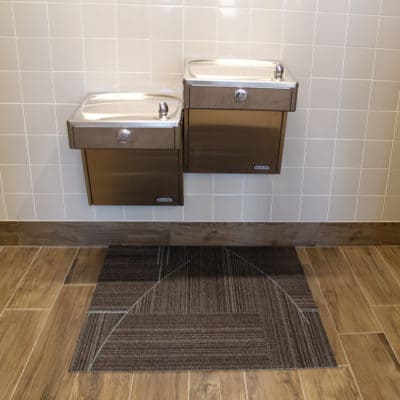Walking surfaces are a major contributor when it comes to injuries from slips, trips, and falls. Some of the common surfaces impacted by being wet or slippery include:
- Wet or icy parking lots
- Freshly mopped flooring
- Bathroom areas
- Water fountain areas
- Housekeeping or janitorial areas
When looking at outdoor hazards, it boils down to the changes that occur when rain, snow, or icy weather hits. This in turn, has an effect on indoor surfaces as well when water and ice are tracked in from shoes.
- Sidewalks and parking lots should always be monitored for deterioration and be kept in good repair.
- Sloped sidewalks or parking lot areas can become hazardous when wet or icy. Having alternative steps or areas with skid-resistant surfaces and handrails can greatly reduce this hazard.
- Walking areas should be cleared for safe travel and treated when snow or ice hits.
Indoor areas should be monitored and corrected as needed on a regular basis as well.
- There should be a plan for mopping during slow times or after hours. Wet floor signs should always be placed afterward. Employees should know that they are to report any wet floor surface, and a wet floor should be placed until the area is cleaned and dried.
- Absorbent non-slip mats should be used at all entries to eliminate as much moisture being transferred to the floor as possible.
- Employees should be aware of appropriate footwear to be worn, which is at a minimum flat, closed-toed shoes with good grip.
- Non-slip matting that drains well should be placed in any high liquid-producing areas.
- Procedures should be in place for regular housekeeping of commonly wet areas, including mopping, absorbing, and squeegeeing the liquid.
Wet and slippery surfaces safety talk

